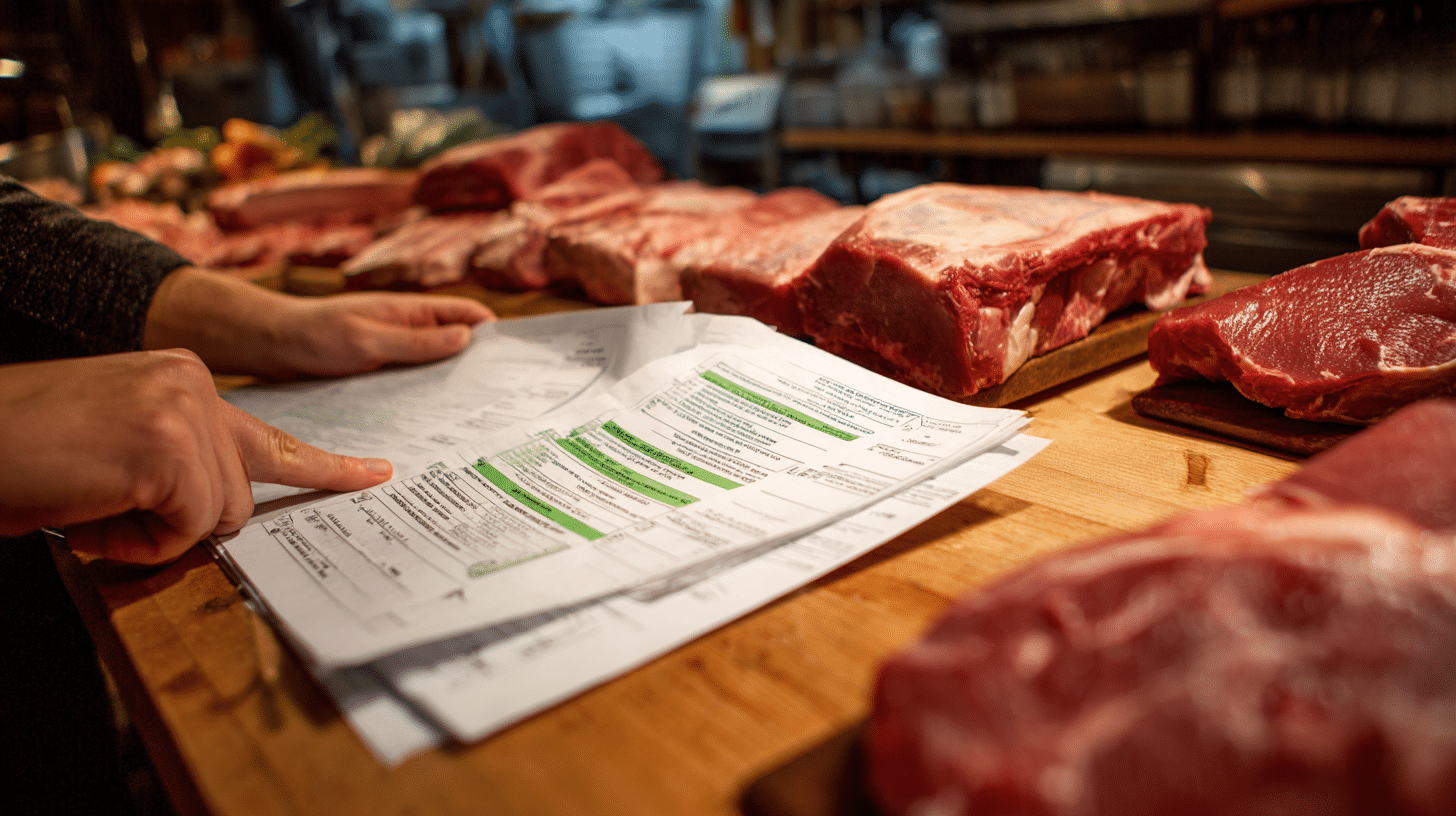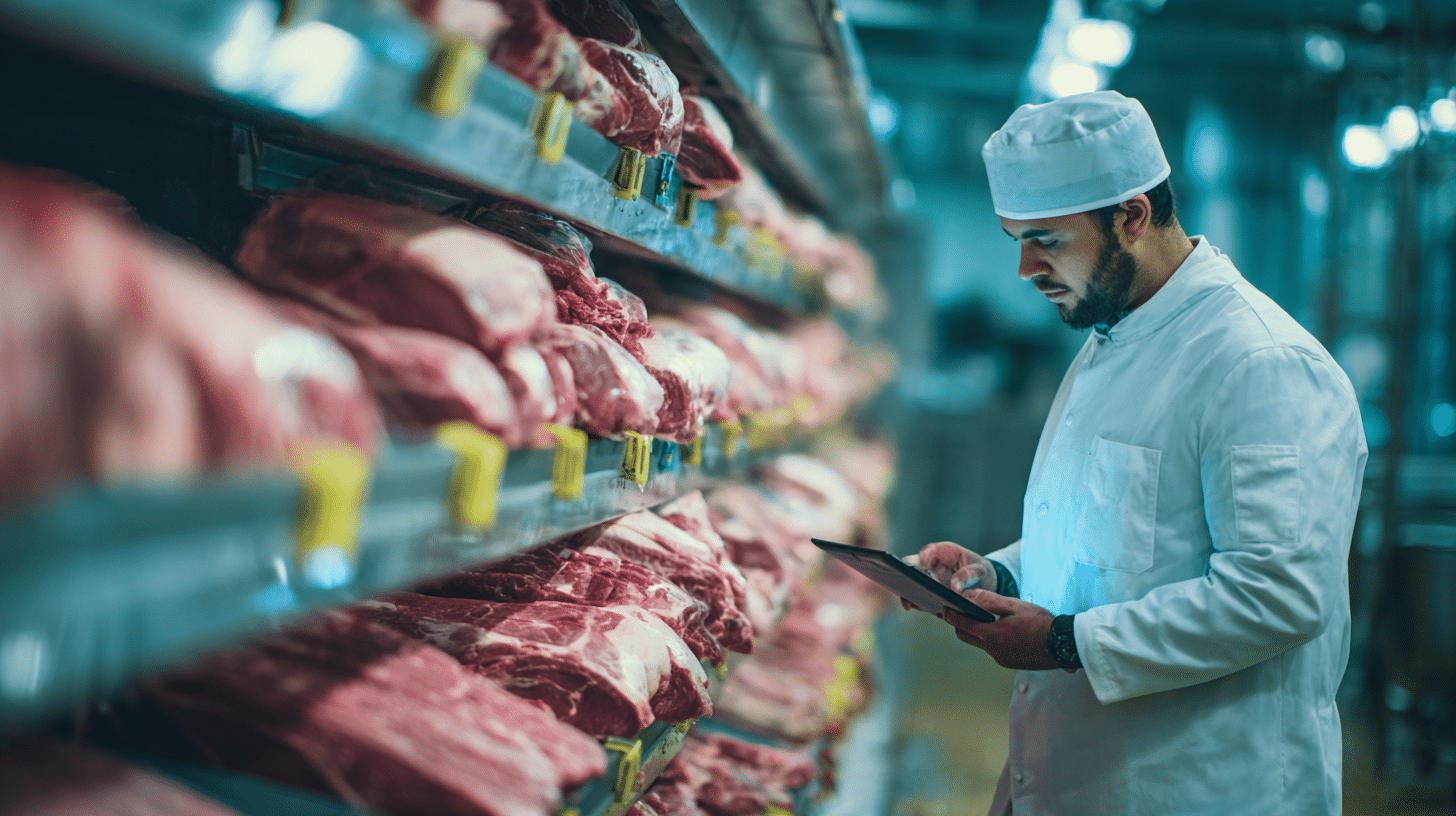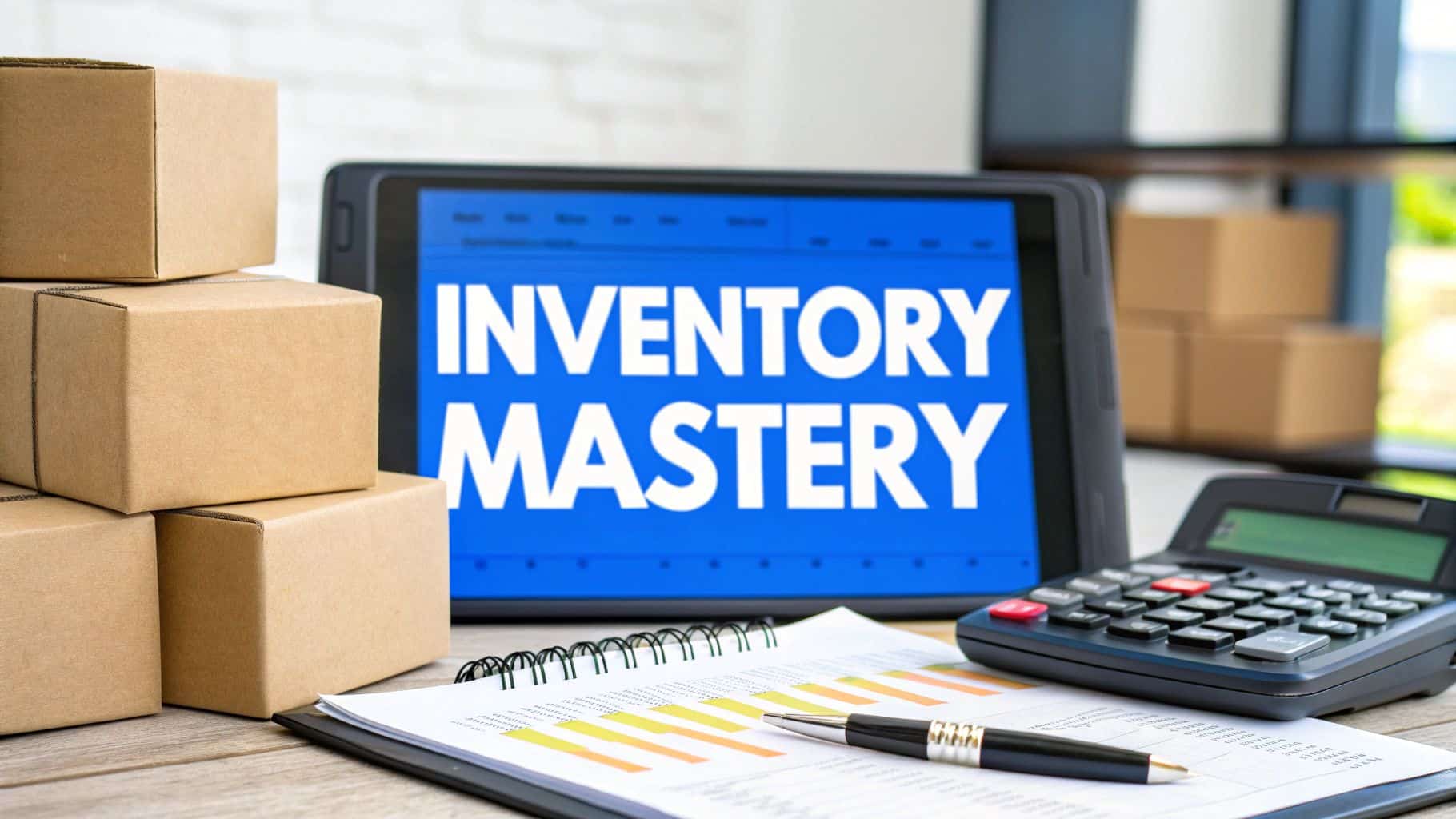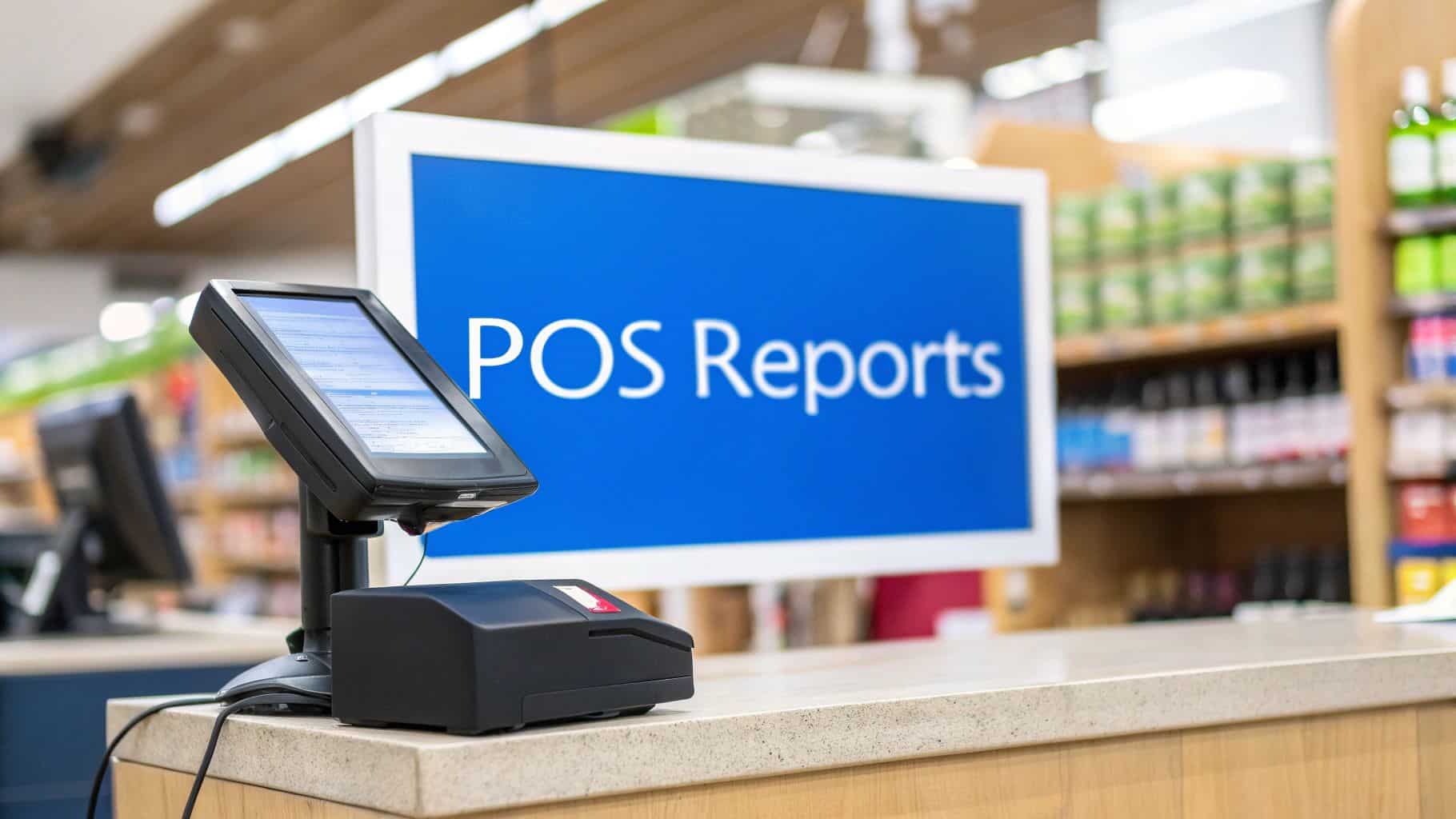Running a butcher shop goes far beyond slicing meat and serving customers. Behind the counter, profitability depends on how well you manage expenses, inventory, pricing, and cash flow. Butcher shop cost management is the foundation that allows a shop to thrive in a competitive market. Without it, even the busiest butcheries can struggle to survive due to waste, mispricing, or uncontrolled spending. This article dives deep into strategies that help butcher shop owners cut unnecessary costs, maximize margins, and secure long-term financial health.
Table of Contents
- Tracking and Controlling Expenses
- Inventory Management and Yield Optimization
- Pricing Strategies and Profit Margin Analysis
- Financial Reporting and Budget Planning
- Cash Flow Management and Expense Reduction
- How Biyo POS Simplifies Butcher Shop Cost Management
- FAQ: Butcher Shop Cost Management
Tracking and Controlling Expenses
Every butcher shop spends money daily, but the key difference between successful and struggling businesses is how well those expenses are tracked and controlled. Butcher shop cost management starts with full visibility over every dollar that leaves the business. Expenses such as payroll, supplier invoices, utilities, packaging, and maintenance add up quickly, and without a system in place, it becomes impossible to identify wasteful spending. By implementing structured expense tracking methods, shop owners gain the ability to cut costs strategically rather than reactively.
Expense Tracking Systems
Modern butchers can no longer rely on notebooks or outdated spreadsheets if they want to stay competitive. Digital expense tracking tools and accounting software provide real-time insights into where money is being spent. These systems categorize expenses into groups like rent, payroll, utilities, and wholesale purchases, which allows owners to compare monthly trends. For example, if a butcher notices utility costs rising during summer months, they can plan energy-saving upgrades in advance instead of absorbing the losses blindly. Expense tracking also provides valuable data when negotiating with suppliers, helping owners make fact-based decisions rather than relying on assumptions.
Beyond daily management, accurate expense tracking ensures compliance during tax season. Shops that keep digital records with receipts and categorized expenses spend less time scrambling to prepare financial reports. Instead, everything is organized and ready for submission, reducing the risk of audits or penalties. Another benefit is improved decision-making. Owners can clearly see which areas of the business are eating into profits and adjust strategies accordingly. For instance, noticing that packaging costs have doubled may prompt a switch to a more cost-effective supplier without reducing quality.
Most importantly, expense tracking allows for proactive management rather than reactive firefighting. Instead of waiting until cash runs low, shop owners can anticipate financial challenges months ahead. This level of foresight is what separates stable, profitable butcher shops from those that struggle to survive paycheck to paycheck.
Supplier Management and Wholesale Pricing
Suppliers are one of the biggest influences on a butcher shop’s financial health. The wholesale prices set by suppliers directly impact the cost of goods sold and profit margins. To optimize butcher shop cost management, owners must develop strong supplier relationships and negotiate terms that work in their favor. For instance, purchasing larger quantities may unlock discounts, but it only makes sense if sales volume justifies the extra stock. Otherwise, the shop risks spoilage and wasted money. Negotiating flexible payment terms, such as net-30 or net-60, also helps smooth out cash flow and reduce financial strain during slower months.
Regular supplier reviews are equally important. A supplier who was cost-effective last year may no longer be competitive today. By comparing quotes across multiple vendors, owners ensure they’re not overpaying for meat, packaging, or other essentials. In addition, monitoring delivery accuracy prevents hidden costs from creeping in. If a supplier consistently delivers short weights or charges for premium cuts but sends lower-grade meat, the butcher shop loses money without realizing it. Careful auditing protects margins and keeps relationships transparent.
Some butchers also benefit from diversifying suppliers. Relying on one vendor may provide convenience, but it leaves the shop vulnerable to sudden price hikes or supply chain disruptions. Working with multiple suppliers builds resilience and ensures the shop can continue operations even when unexpected challenges arise. Ultimately, smart supplier management is not just about getting the lowest price—it’s about ensuring reliability, fairness, and long-term financial sustainability.
Operating Expenses and Payroll Management
Payroll and operating expenses are often the largest recurring costs for butcher shops. Balancing labor efficiency with customer service is crucial for strong butcher shop cost management. Overstaffing during slow hours leads to wasted wages, while understaffing during peak times results in lost sales and dissatisfied customers. The solution lies in tracking sales patterns and scheduling employees strategically. For instance, a shop that sees peak activity on weekends can reduce weekday staffing and allocate more hours to busy days without sacrificing service quality.
Non-payroll operating expenses also require close oversight. Rent, insurance, cleaning, and equipment maintenance often go unnoticed until they balloon into unmanageable costs. By conducting quarterly reviews of every expense category, owners can identify areas to reduce costs without harming operations. For example, switching to energy-efficient refrigeration units lowers utility costs in the long run. Negotiating insurance policies or re-evaluating maintenance contracts also helps cut unnecessary expenses.
Payroll management also extends to employee productivity. Butchers and assistants who are cross-trained across multiple roles bring greater flexibility and efficiency. Instead of hiring additional staff, a well-trained team can handle varied responsibilities, saving the business thousands annually. When labor costs align with sales revenue, butcher shops maintain healthier margins and build financial stability.

Inventory Management and Yield Optimization
Inventory is one of the most valuable and vulnerable assets in a butcher shop. Poor management can lead to spoilage, waste, and cash flow shortages, while strong practices maximize product yield and customer satisfaction. Effective inventory management ties directly to butcher shop cost management, as it determines how much profit can be extracted from each purchase and how efficiently products move through the business.
Inventory Control Techniques
Accurate inventory control begins with regular stock counts and digital tracking. POS systems with integrated inventory features provide real-time insights into stock levels, sales velocity, and reordering needs. For example, instead of relying on guesswork, a butcher can see exactly how much ground beef sold in the past week and adjust orders accordingly. This prevents both overstocking, which leads to waste, and understocking, which frustrates customers and results in lost sales. Automated alerts also act as safety nets by notifying staff when products reach minimum thresholds.
Another proven method is FIFO (First In, First Out). By ensuring that older stock sells first, butchers maintain product freshness and reduce spoilage. This is particularly important in meat shops where expired or spoiled items not only lead to financial losses but also damage customer trust. Shops that adopt strict FIFO practices consistently outperform competitors in terms of customer loyalty and reputation. Moreover, monitoring which items sell fastest allows shops to focus more on stocking high-demand products while phasing out slow movers.
Strong inventory control also minimizes shrinkage caused by theft or mismanagement. By keeping detailed logs of every incoming and outgoing product, owners can detect discrepancies quickly and take corrective measures. In an industry where margins are often tight, even small improvements in inventory accuracy can have a major financial impact over time.
Yield Management and Waste Reduction
Yield management refers to maximizing the usable portions of each animal or cut purchased. Skilled butchers understand that value doesn’t just come from premium cuts like ribeye or tenderloin. Trimmings can be repurposed into ground meat, sausages, or specialty products, adding additional revenue streams from what might otherwise be waste. This approach not only improves profitability but also aligns with sustainable business practices, which are increasingly important to today’s consumers.
Tracking yield ratios helps owners understand the true profitability of different products. For example, while prime cuts command high per-pound prices, secondary products often deliver higher overall margins because they sell in larger volumes and appeal to budget-conscious shoppers. By analyzing yield, butchers can strike the right balance between premium offerings and everyday staples to maximize total revenue. Shops that fail to track yield often overlook hidden profit opportunities buried in by-products.
Waste reduction is also essential for cost management. Spoiled products, improper storage, or inefficient cutting techniques all contribute to unnecessary losses. By investing in staff training and modern equipment, butcher shops can minimize waste while maintaining consistent quality. Customers also notice when a shop operates responsibly, which builds loyalty and long-term trust. In essence, yield management transforms every purchase into multiple streams of profit instead of a single transaction.
Sales Tracking and Forecasting
Sales tracking provides critical data that supports smarter inventory decisions. By monitoring what sells and when, owners can predict future demand and align stock levels with customer preferences. For example, grilling season often increases demand for steaks, burgers, and skewers, while colder months see higher sales of roasts and stewing cuts. Without sales tracking, shops risk missing seasonal opportunities or tying up cash in slow-moving products.
Revenue forecasting builds on sales tracking by projecting future income based on historical patterns, market trends, and upcoming events. This allows butcher shops to place orders more strategically and negotiate better wholesale pricing with suppliers. For instance, if forecasting predicts a spike in holiday orders, owners can secure bulk discounts ahead of time and increase margins during peak demand. Conversely, during slower seasons, forecasting helps adjust orders downward to preserve cash flow.
When sales tracking and forecasting integrate with inventory management, the result is a highly efficient system that minimizes waste, meets customer demand consistently, and maximizes profitability. This kind of forward-looking approach ensures butcher shops stay financially healthy year-round, regardless of seasonal fluctuations.
Pricing Strategies and Profit Margin Analysis
Pricing is one of the most powerful tools in butcher shop cost management. The right strategy balances customer expectations with profitability, ensuring every product sold contributes positively to the bottom line. Setting prices too low can erode profits, while setting them too high risks driving customers away. By combining data-driven analysis with customer insights, butcher shops can find the sweet spot that maximizes both sales and margins.
Calculating Cost of Goods Sold
The cost of goods sold (COGS) forms the backbone of all pricing decisions. It includes not just the wholesale cost of meat but also processing, packaging, storage, and labor associated with preparing the product for sale. Many butcher shops underestimate COGS by focusing solely on purchase prices. This oversight leads to underpriced products that eat into margins. For accurate butcher shop cost management, owners must calculate COGS with precision and update it regularly to reflect market changes.
For example, if wholesale beef prices rise by 10% due to supply chain disruptions, continuing to sell at old prices quickly erodes profits. On the other hand, if packaging or labor efficiency improves, COGS may decrease, creating opportunities for competitive pricing or margin expansion. Regular reviews ensure prices always reflect real costs instead of outdated estimates. Shops that master COGS calculations consistently outperform competitors who operate blindly.
Accurate COGS tracking also allows shops to experiment with bundled pricing strategies. For instance, combining premium cuts with lower-cost items into package deals provides value to customers while improving total profitability. Without COGS data, these opportunities remain hidden and underutilized.
Profit Margin Analysis
Profit margin analysis takes COGS data and compares it against selling prices to reveal which products deliver the best returns. Not all cuts are equally profitable, even if they generate similar sales volumes. Premium steaks may bring higher per-pound profits, but staples like ground beef often move faster and generate steady cash flow. By analyzing both gross margins and net profitability, owners can identify which products to prioritize and which may need price adjustments.
Margin analysis also uncovers hidden inefficiencies. For instance, if a popular sausage product has thin margins due to high seasoning costs, renegotiating ingredient prices or adjusting the recipe may restore profitability without affecting customer satisfaction. Shops that conduct regular margin analysis are better equipped to make strategic decisions instead of relying on gut instincts.
Over time, margin analysis guides product mix strategies. By promoting high-margin items and carefully managing lower-margin staples, butcher shops maintain financial balance while continuing to serve a diverse customer base. This balance is critical for long-term growth and resilience in a competitive industry.
Price Optimization Strategies
Price optimization means adjusting prices intelligently to maximize revenue while maintaining customer loyalty. Factors such as seasonal demand, local competition, and consumer psychology all influence pricing decisions. For example, customers may willingly pay more for premium roasts during holiday seasons, while everyday staples must remain competitively priced to attract repeat business. Understanding these dynamics allows butchers to maximize margins without alienating shoppers.
Technology plays a major role in price optimization. POS systems with built-in analytics allow shops to test price changes and track the results in real-time. If a small price increase on premium cuts does not impact sales volume, it represents pure profit. Conversely, if a price reduction leads to a significant volume increase, overall revenue may grow despite lower per-unit margins. By experimenting strategically, butcher shops refine their pricing models over time.
Price optimization also includes psychological strategies such as value bundling or “loss leaders.” Selling one item at a lower margin may attract customers who then purchase additional, higher-margin products. For example, discounted ground beef can draw customers into the shop, where they also buy premium steaks or specialty sausages. These tactics not only optimize margins but also build stronger customer relationships.
Financial Reporting and Budget Planning
Financial reporting and budget planning transform raw data into actionable strategies. While tracking expenses, inventory, and margins is essential, reporting provides the big-picture view needed for decision-making. Budget planning then translates that data into a roadmap for sustainable growth. Together, they form the strategic backbone of butcher shop cost management.
Importance of Regular Financial Reports
Financial reports provide clarity on whether a butcher shop is truly profitable. Monthly profit and loss statements, balance sheets, and cash flow reports reveal where money is coming in and where it’s going out. These insights help owners catch problems early, such as rising expenses or shrinking margins, before they spiral out of control. For example, a sudden spike in refrigeration costs might indicate failing equipment that requires attention before it causes a major breakdown.
Beyond internal management, financial reports build credibility with external stakeholders. Banks, investors, and suppliers all prefer to work with businesses that demonstrate financial discipline. A butcher shop with clean, detailed financial reports is more likely to secure favorable loans or supplier credit terms compared to one that operates without transparency. This credibility creates opportunities for growth and expansion that would otherwise remain closed.
Regular reporting also encourages accountability within the business. When staff and managers know their performance is being tracked and reviewed, they become more conscious of efficiency and cost control. This culture of accountability reinforces smart financial habits across the entire operation.
Budget Planning for Growth
A budget is not just a spending limit—it’s a roadmap for growth. Budget planning helps butcher shops allocate resources to areas with the highest return on investment. For example, a shop may budget for new equipment that reduces waste or for marketing campaigns that increase sales volume. By planning expenditures strategically, owners avoid overspending in areas that deliver little benefit and focus on initiatives that drive profitability.
Seasonal fluctuations also make budgeting critical. By setting aside funds during high-revenue months, butcher shops ensure they have enough cash flow to weather slower periods without resorting to debt. This foresight stabilizes finances and reduces the stress of operating in an unpredictable market. Without budget planning, shops risk running into liquidity problems even if they appear profitable on paper.
Budget planning also prioritizes investments. Instead of reacting to immediate challenges, owners can schedule upgrades and expansions at the right time. For instance, budgeting for staff training during slower months maximizes productivity when peak seasons return. This structured approach ensures resources are always used wisely and in alignment with long-term goals.
Break-Even Analysis
Break-even analysis is one of the most powerful tools for butcher shop cost management. It shows exactly how much revenue a shop must generate to cover expenses before turning a profit. This analysis helps owners make smarter decisions about pricing, product launches, and expansions. For example, if a new sausage product requires $5,000 in equipment investment, break-even analysis reveals how many units must be sold to recover the cost. If sales forecasts don’t meet that number, the project can be adjusted or delayed to avoid financial strain.
Break-even analysis also supports risk management. By knowing their break-even point, owners avoid taking on commitments that may overextend the business. Instead, they focus on opportunities that align with financial stability. For instance, when expanding to a new location, calculating break-even sales ensures the decision is grounded in realistic expectations rather than optimism alone.
Ultimately, break-even analysis empowers butcher shops to grow sustainably. By grounding decisions in hard data, owners reduce uncertainty and increase confidence in their long-term strategies.
Cash Flow Management and Expense Reduction
Profitability means little without healthy cash flow. A butcher shop may appear successful on paper yet fail due to an inability to pay bills on time. Cash flow management ensures money moves smoothly through the business, covering day-to-day operations while leaving room for investment. Expense reduction complements cash flow management by ensuring that costs stay in check, preventing unnecessary drains on resources.
Managing Daily Cash Flow
Daily cash flow management starts with tracking every dollar that comes in and goes out. POS systems with integrated accounting tools simplify this process by recording sales, supplier payments, and payroll automatically. Reviewing cash balances at the end of each day highlights potential issues before they escalate. For instance, if supplier invoices are due before customer payments clear, the shop may face a temporary cash shortage. Recognizing this early allows owners to negotiate new payment terms or set aside reserve funds.
Strong daily management also improves decision-making. Owners who monitor cash flow closely know when they can afford to invest in growth and when to conserve resources. For example, noticing consistent weekly surpluses may signal that the business is ready to expand into catering or wholesale sales. Conversely, recognizing periods of tight liquidity helps avoid risky investments that could jeopardize operations.
In short, daily cash flow monitoring acts as a financial safety net. It ensures butcher shops stay prepared for both expected and unexpected challenges, maintaining stability in a competitive industry.
Utility Costs and Expense Reduction
Utility costs are among the largest ongoing expenses in butcher shops due to refrigeration, lighting, and equipment operation. Reducing these costs is essential for effective butcher shop cost management. Installing energy-efficient refrigeration units, LED lighting, and smart thermostats all contribute to lower utility bills. Regular equipment maintenance further prevents energy waste caused by malfunctioning systems. Over time, these changes result in significant savings without compromising product quality.
Expense reduction also extends beyond utilities. Reviewing supplier contracts, packaging materials, and waste disposal services often reveals hidden opportunities for savings. For instance, switching to eco-friendly packaging not only lowers costs but also appeals to environmentally conscious customers. Similarly, renegotiating waste collection schedules to match actual volume prevents shops from overpaying for services they don’t fully use.
Importantly, expense reduction doesn’t mean cutting corners. Instead, it’s about spending smarter. Shops that reduce waste and inefficiency free up resources to reinvest in growth, whether through marketing, staff training, or customer experience improvements. This balance ensures long-term sustainability and profitability.
Cash Flow Forecasting
Cash flow forecasting takes daily tracking one step further by predicting future liquidity. By analyzing past sales data, seasonal patterns, and upcoming expenses, shops can estimate when they will experience surpluses or shortages. This allows for proactive planning instead of last-minute scrambling. For example, forecasting may reveal that January is consistently slow, prompting the shop to save extra cash during December’s busy holiday season.
Forecasting also supports supplier negotiations and investment decisions. If a butcher knows they’ll have a cash surplus in three months, they can negotiate early payment discounts with suppliers or plan for equipment upgrades without risking liquidity. Conversely, anticipating a shortage allows for preventive measures like adjusting inventory orders or launching promotions to boost revenue.
In essence, cash flow forecasting provides butcher shops with financial foresight. It empowers owners to plan strategically, maintain stability, and position themselves for sustainable growth.

How Biyo POS Simplifies Butcher Shop Cost Management
Biyo POS is designed to simplify butcher shop cost management by integrating all key financial functions into one platform. From expense tracking to inventory control and financial reporting, the system provides real-time insights that empower smarter decision-making. Butchers can monitor profit margins, manage supplier relationships, and track sales trends with ease, all within a single dashboard. This eliminates the need for juggling multiple tools and reduces the risk of errors.
Beyond financial tracking, Biyo POS includes features like payroll management, accounting integrations, and cash flow forecasting. For example, owners can analyze daily sales alongside operating expenses to determine the exact profitability of each shift. Integrated supplier management tools also simplify invoice tracking, ensuring payments are accurate and on time. These features help butchers save time, reduce stress, and focus on customer service rather than back-office tasks.
By adopting Biyo POS, butcher shops not only improve financial control but also gain a competitive edge. Technology-driven insights support better decision-making, higher efficiency, and sustainable growth. In today’s competitive market, leveraging tools like Biyo POS can make the difference between barely surviving and thriving with confidence.
FAQ: Butcher Shop Cost Management
Why is butcher shop cost management important?
Cost management ensures butcher shops remain profitable by controlling expenses, reducing waste, and optimizing pricing. Without it, shops risk financial instability, even if sales volumes are high. Strong cost management also creates a foundation for growth and sustainability.
How can inventory control improve profitability?
Inventory control reduces spoilage, prevents over-ordering, and ensures that fresh products are always available for customers. By implementing methods like FIFO and using POS systems with inventory tracking, butcher shops reduce waste and boost overall profit margins.
What is the role of financial reporting in cost management?
Financial reporting provides a clear view of profitability, cash flow, and expense trends. These insights allow owners to make informed decisions, prepare realistic budgets, and secure external financing when needed. Without reporting, shops risk making blind decisions that harm profitability.
Can technology help with butcher shop cost management?
Yes. POS systems like Biyo POS streamline cost management by integrating expense tracking, inventory control, payroll management, and financial reporting. This technology reduces errors, saves time, and provides the insights needed to make smarter, more profitable decisions.




